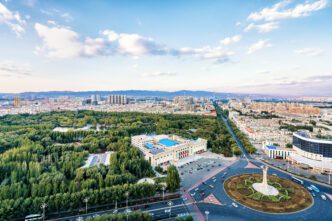Executive Summary
The Story So Far
Why This Matters
Who Thinks What?
Inner Mongolia, a northern Chinese autonomous region, has unveiled a 10-year development plan aimed at transforming its second-largest city, Baotou, into a world-leading hub for rare earth elements (REEs) and critical materials. The ambitious strategy, issued on Wednesday and extending through 2035, seeks to bolster China’s dominant position in the global REE supply chain by boosting mining, refining, and magnet production, particularly for the burgeoning new-energy industry.
Strategic Development Goals
The plan outlines comprehensive progress in the protection and integrated use of critical minerals, including a new round of strategic mine-exploration work. It also emphasizes accelerating the development of high-end rare earth functional materials. The region intends to optimize the application structure and spatial layouts for critical minerals, while simultaneously enhancing the efficiency of resource utilization.
Global Significance of Inner Mongolia
Inner Mongolia is a critical region for global rare earth supply, housing the Bayan Obo mine, which accounts for more than 40 percent of the world’s known rare earth element reserves. According to NS Energy Business, this mine alone is responsible for nearly half of the global rare earth production.
Strengthening China’s Market Position
Analysts suggest this initiative will further solidify China’s leading role in the global REE market. Rajiv Biswas, CEO of Asia-Pacific Economics, stated that the strategic development of Baotou into an integrated rare earths supply-chain hub will strengthen China’s position as the world’s primary REE producer.
Biswas further noted that large-scale new investment in magnets utilizing REE materials in Baotou is expected to reinforce China’s global leadership. This leadership is particularly crucial for the production of magnets essential for new electric vehicles and wind turbines, key components in the renewable energy sector.
Outlook on Global Supply Chains
This strategic push by Inner Mongolia underscores China’s long-term commitment to controlling and advancing its rare earth industry. The initiative has significant implications for global supply chains and the transition to new-energy technologies, as other nations and firms also race to diversify their sources.








